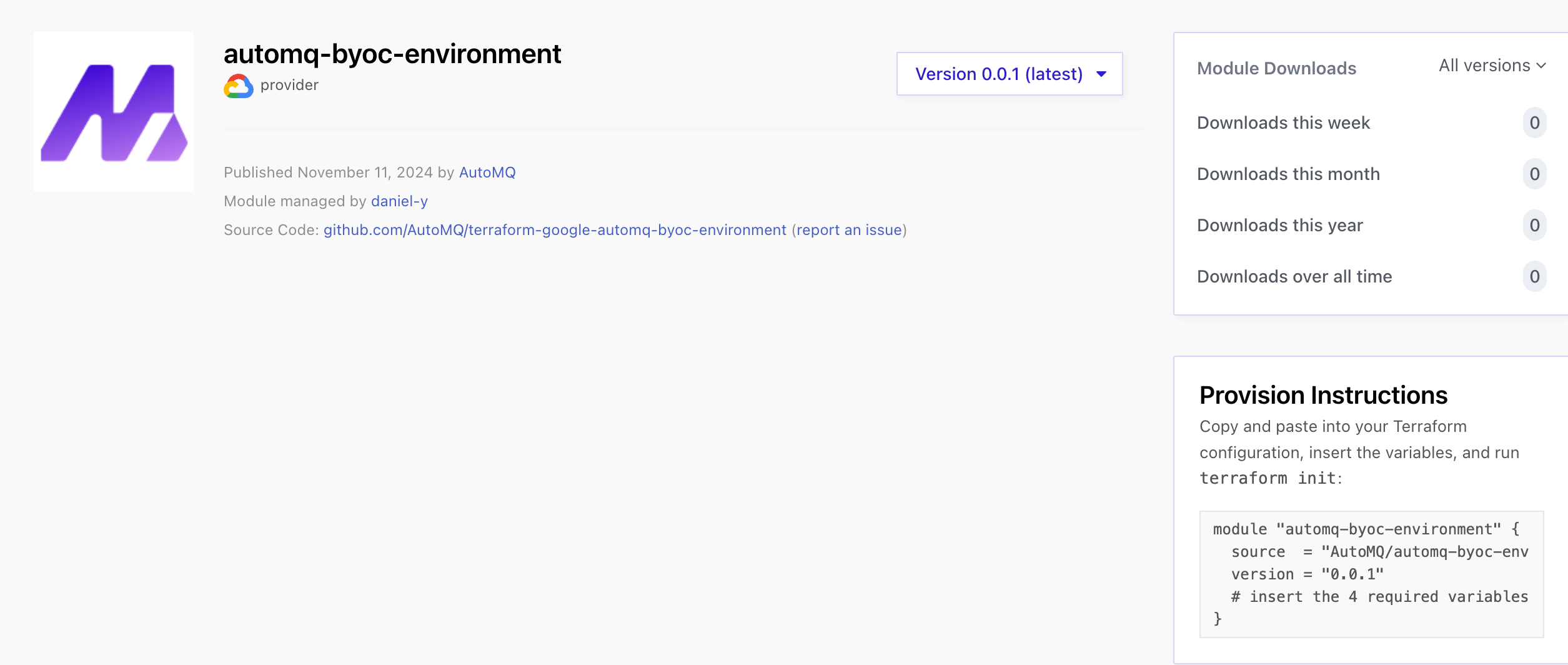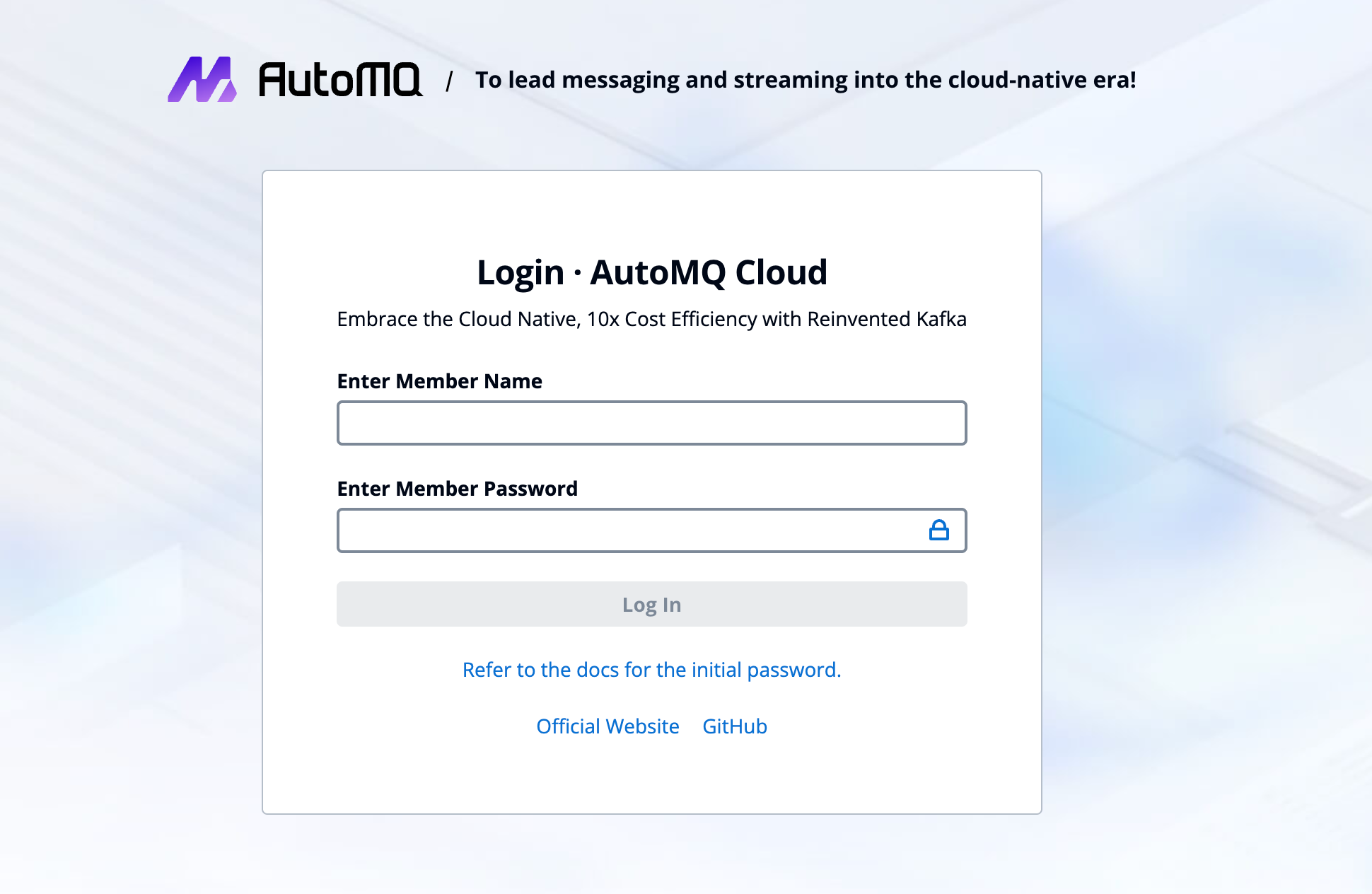Install Env Via Terraform Module
Refer to Overview▸, using AutoMQ Cloud requires an initial environment setup. This article explains how to install a BYOC environment using the Terraform Module.
In this article, any mention of AutoMQ Product Services, AutoMQ Services, or AutoMQ specifically refers to AutoMQ HK Limited and its subsidiaries.
Operation Procedure
Step 1: Prepare VPC and Subnet
The AutoMQ BYOC environment is deployed within the user's VPC to ensure data privacy and security. When installing the AutoMQ environment using Terraform Modules, the following two options are supported:
Automatically create a new VPC and subnet installation environment: Selecting this option will have the Terraform Modules automatically create the VPC, subnet, and other resources without manual configuration, recommended for initial POC and testing.
User-provided VPC and subnet installation environment: Terraform Modules will not actively create the VPC network, it is specified by the user’s existing VPC network.
If you choose User-provided VPC installation environment, the existing VPC needs to meet the following conditions.
Subnet CIDR Requirements: The AutoMQ data plane cluster is deployed in the user's VPC, which will consume the VPC subnet's IPs. It is recommended to allocate sufficient available IPs in each subnet (no fewer than 1000 available IPs per subnet) to avoid subsequent deployment and cluster expansion issues.
Configure Private Network Access to Google API: AutoMQ needs access to cloud services such as GCS. It is recommended to configure private network resolution and routing to access the aforementioned Google API through a private network to avoid unnecessary public network traffic costs. For configuration methods, refer to the appendix section Install Env via GCP Marketplace▸.
Step 2: Invoke AutoMQ Terraform Module to Install the Environment
- Install the Terraform CLI tool in your local environment; after installation, confirm that you can output the version.

- Install gcloud and configure a Google Cloud account.
gcloud auth application-default login
- Refer to the AutoMQ GCP Terraform Moduledocumentation, install the module, and follow the example code to install the BYOC environment.

- Access the environment console, log in using the initial username and password output by Terraform, and change to a custom password.

Step 3: Complete BYOC Environment Operations Authorization
The BYOC environment is deployed in the user's VPC, ensuring data security and privacy isolation. However, the BYOC environment will generate system logs, metrics, and other system data unrelated to business. After the environment installation is complete, users need to refer to Manage Environment Ops Authing▸ to provide the appropriate operational authorization to the AutoMQ service provider, facilitating system stability monitoring and self-healing operations.
Subsequent Steps
On Google Cloud, AutoMQ currently supports deploying the data plane cluster only on the GKE platform. Therefore, after installing the environment console, you will still need to prepare the GKE cluster and configure it in the environment console to use it.
For preparing GKE clusters, node pools, and other configurations, please refer to Deploy to Google Cloud GKE▸.